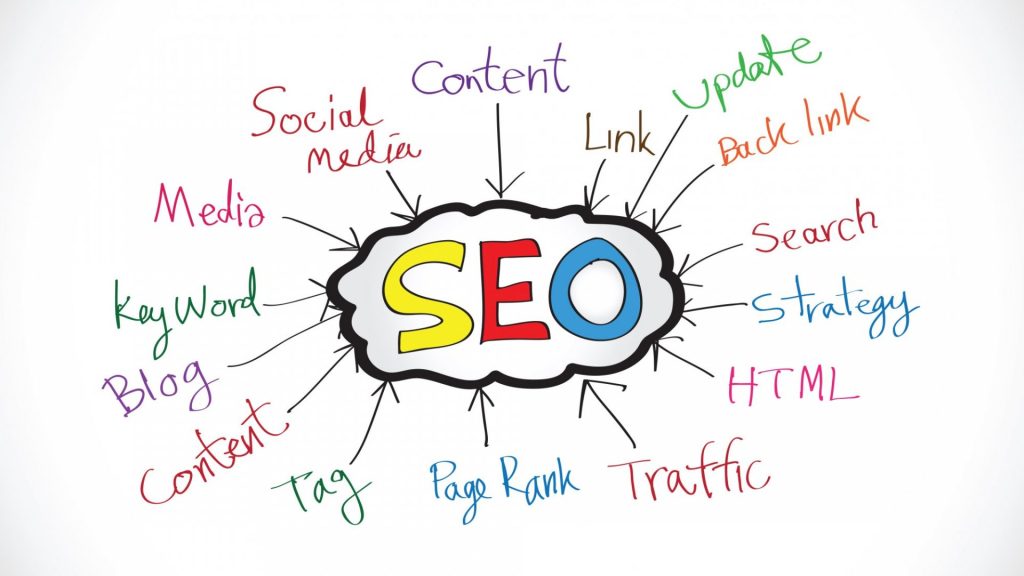Website Redesign Guide, Ultimate Step-by-Step Guide, Thinking of a Website Redesign
Introduction
Currently, one can hardly overestimate the role of the website in a company’s functioning, it is the face of businesses. It is crucial to notice that discussing the redesign of a website, is not only about applying the new coat of varnish but rather the improvement of its overall activity and comprehensibility for the user. A proper redesign of a site can lead to more visitors, improved and more interested visitors, and thus, overall higher conversion. First and foremost, let us stress that website redesign is a crucial topic – it is a strategic decision that is about maintaining your brand in the corresponding market niche. But at what point does a website redesign make sense? Alright, let’s get a bit more detailed on this.
Objectives for Your Redesign
Website redesign is almost always accompanied by high expectations and, therefore, requires well-defined objectives. What is your goal or matter of concern? Stating goals, for instance, growing the number of visitors to the site, encouraging visitors to spend more time on the site or even making more sales can serve the purpose of guiding the strategy. Ensure that these goals fit into the larger business strategies of your company to avoid having unrelated goals. A goal-oriented philosophy is not only efficient in accomplishing the need for redesign but also provides a means to evaluate the results.

Analyzing Current Website Performance
It is crucially important to comprehend the specifics of your current website’s performance. You should begin with the traffic report to determine the sources of traffic and pages most visited. Conduct studies that will reveal issues with the users of the website that may include for instance a high bounce rate or low time spent on a particular page. Also, look at how many of your visitors convert into customers—how efficient is your website in this regard? It is a position from where you can quantify the importance of your redesign work in the reach of your targets.
Understanding Your Audience
As mentioned above to design a user-centered website, it is of utmost importance to know your users. Conduct a detailed elaboration of the real-life prototypes of the typical visitors. Collect data by questionnaires, interviews, and/or usability studies to identify what they want, like, and dislike. Thus, focusing on users guarantees that the changes you introduce deal with actual user issues, which will increase satisfaction and engagement.

Competitor Analysis
It is useful to compare one’s performance results with those of other firms. Each one engages with websites and social media so you can evaluate the layouts and discover which strategies are effective and which are not. Start recognizing the tendencies in design, the functions, and the usability of the site or the application that would be interesting to its viewers. This competitor analysis not only helps in the redesign of a product/idea but also sheds light on the specific areas where one could out compete a competitor.
Defining Your Brand Identity
Your website must represent the brand identity of your company. The cohesion of the brand across all the platforms enhances the branding, hence improving customer confidence in the brand. Illustrate the visual aspect of your brand including logos, accented colors, typography, and visual features that express your brand’s personality and values. Brand consistency creates a positive image in the eyes of the user and, thus, creates brand enthusiasts.

SEO Considerations
Implementing and optimizing for Search Engines is a very important factor to consider when doing a company’s website redesign. Make sure that other common factors like the title, description, headings, and alt tags of the page are properly tagged. Social signals and backlinks, which belong to off-page SEO should also be supported. Tech SEO should not be forgotten; site speed, mobile points, and the use of an SSL are crucial for better positions in SERP.
Content Strategy
Content now reigns supreme and a good content strategy is very important. First, identify the situation to establish the starting point for your content strategy audit. Find out the missing link and possibilities of content generation. That is why your content has to be always useful, interesting and helpful to the users. Organize the migration of content carefully in order not to lose information and to proceed with it.
Choosing the Right CMS
Selecting the right content management system or CMS will have a huge say on the way and the ease with which your website will perform. WordPress, Joomla, and Drupal are some of the most popular Content Management Systems that provide features and possible tweaks. Understand your needs and select the CMS that corresponds to your needs concerning the perspectives of alteration, flexibility, and ease of use.

Designing for User Interface (UI)
A user-oriented design improves the comprehension and experience of the users of a specific product. Try to keep menu navigation as simple as possible and the call to action should be evident and easy to find. Make sure that your net design is as accessible as you can to the so-called disabled users. Only if Internet users can be offered optimal easy-to-use solutions or services would they be willing to revisit.
Mobile Optimization
Thanks to the growing numbers of mobile users accessing the Internet on their devices, mobile responsiveness is obligatory these days. Choose a responsive design to have a website that looks and works fine during different types of user visits. The mobile-friendly design is particularly important because it enhances usability and increases your position in the rankings.
Wireframing and Prototyping
Skeleton models and mockups are helpful in visual strategic probing of your website before coding the site. A wireframe describes and defines the layout of a webpage and application while a prototype enhances the view by modeling the design and functional aspect of it. This step enables one to look for any barriers to the usability of the interface and also to improve the design.
Visual Design and Branding
In terms of visual appeal, your site should be structured and well-designed in terms of color and layout. It is important to note that color options have a direct impact on customers’ perceptions and attitudes, and therefore one should ensure that the selected color options inspire feelings that align with the brand’s message. Typographies should be clear as well as uniform. High-quality images result in a better taste of the site and thus more traffic.
Development and Coding
The specific activities involve both the front-end and back-end development work. Front-end development involves making a proper user interface and experience and entails the aspect of making the designed layout of the website work appropriately. Regarding the back-end development, this incorporates the server side such as the databases and the other integration processes. There is teamwork between designers and developers because the designers sell ideas to developers to create.
Integrating Third-Party Tools
If you want to use your website beyond the primary purpose of creating awareness about your business, service, product, or brand, then it is good to incorporate third-party applications including tracking and measurement, marketing, and customer relations management tools. They can serve as useful information sources, improve and facilitate marketing processes, and increase the level of user satisfaction. Make sure that integration can be done without detail affecting the performance of the site.
Testing and Quality Assurance
It is important in today’s fast-developing world that your website is tested before it is launched into the markets so that it can suit the intended purpose that it was designed for. Carry out a functional test to ensure that all the functional aspects within the user interfaces are tested. It has the potential to unveil aspects of the users’ experience and possible enhancements for the process. Strategies and solve any bugs or problems before the last release to allow users an easy time using the program or application.
Launch Plan
It is very vital to have a good structure for the launch plan in any website business. Based on the learning points above, the following pre-launch checklist should be prepared. It is recommended that the site should be checked regularly after launching to correct any problems on the site. Promote the launch to your audience through the available media so that they can visit your websites.
Post-Launch Optimization
It is crucial to mark that the work isn’t complete as soon as launching the application. The re-optimization based on the user feedback and the performance data is important to be continuous. Track KPIs and be able to make recommendations using analytical methods. They ensure that your website is always up-to-date and more importantly always optimally functional.
Measuring Success
The proof of the effectiveness of website redesigning is expressed with the help of such factors as the traffic, the possibilities of the users’ engagement, and the conversion rates. These KPIs include those covered in the reading assignment and should be measured using tools such as Google Analytics. You should have specific targets in redesigning your firm and you should evaluate it periodically and assess whether it has met the set goals or not.
Common Mistakes to Avoid
Some of the common mistakes that firms make when redesigning their Website include; complex designs, ignoring SEO, and inadequate testing. This is because when the user is kept as the focus of design and strategy, then one does not fall into such errors. The major challenge remains in striking a good artistic and utilitarian balance in their designs.
FAQs About Website Redesign
What are the signs that my website needs a redesign?
Less traffic, website layout is outdated, interaction with the website is not good, and a low conversion rate is enough to conclude that it may be time to redesign the website.
How long does a website redesign take?
It can take several days to several months to complete depending on the nature and the size of the project.
Can I redesign my website myself?
Still, such an option can be resumed as hiring professionals to make sure the redesign is extensive and meets the standards of usability and SEO-friendliness.
How much does a website redesign cost?
The cost varies depending on several factors including the size and complexity of a project, the special requests or additions a client might require, and the level of experience of the particular specialists working on a particular project. It can cost maybe a few hundred dollars to something like several thousand dollars.
What should I prioritize in a website redesign?
Increase attention to what will produce a better user experience for the website, mobile compatibility, and better SEO. Time to synchronize the redesign with the corporation’s business objectives for effectiveness.
How do I ensure my website redesign is successful?
Draw goals and objectives, find out the target clients, and periodically evaluate the site after its launch. Constant checks of the achievements in set targets will enable the organization to know their success level.
Conclusion
Web redesign is a complex process; however, it transposes immense opportunities when implemented properly. Thus, to gain all of the benefits of a beautiful website, it is necessary to establish goals, know the audience, and improve the usability and search engine optimization of the webpage. This means that the process of restructuring the designs of a website is a continuous process of enhancement.
#Website Redesign Guide, Ultimate Step-by-Step Guide, Thinking of a Website Redesign, #Website Redesign Guide, Ultimate Step-by-Step Guide, Thinking of a Website Redesign, #Website Redesign Guide, Ultimate Step-by-Step Guide, Thinking of a Website Redesign,
#Website Redesign Guide, Ultimate Step-by-Step Guide, Thinking of a Website Redesign,#Website Redesign Guide, Ultimate Step-by-Step Guide, Thinking of a Website Redesign,#Website Redesign Guide, Ultimate Step-by-Step Guide, Thinking of a Website Redesign,





